Bioluminescence, the ability of organisms to produce and emit light, is one of nature’s most fascinating phenomena. Found across various ecosystems—from deep ocean floors to dense forests—this glowing ability serves a range of purposes, from communication and mating rituals to hunting and defense. Some creatures use it as a lure to attract prey, while others glow to ward off predators or blend into their environment. In the vast and mysterious world of bioluminescence, species have evolved unique ways to harness light for survival. In this article, we’ll explore 14 strange and captivating bioluminescent species and examine their roles in nature. From fireflies to deep-sea jellyfish, these organisms continue to intrigue and inspire with their glowing abilities.
Firefly (Lampyridae family)
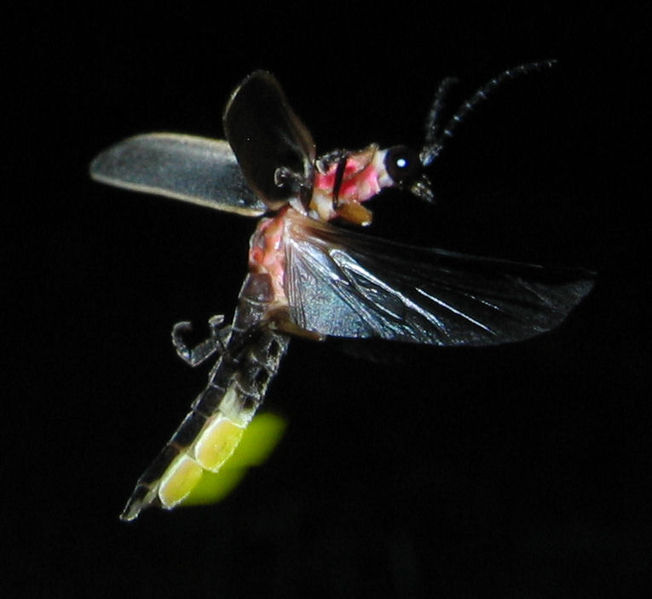
Fireflies are iconic for their glowing abdomens, produced by a chemical reaction called bioluminescence. This light is primarily used to attract mates, with males flashing in specific patterns to signal their presence to females. The light is produced by a chemical reaction involving luciferin, an enzyme called luciferase, oxygen, and ATP. Beyond mating, some fireflies also use their glow as a defense mechanism to warn predators of their potential toxicity. Interestingly, fireflies’ ability to control their glow is what sets them apart from other bioluminescent organisms. In some species, the light is green or yellow, though the colors can vary. Fireflies are not only captivating but play an essential ecological role in controlling insect populations.
Anglerfish (Lophiiformes order)
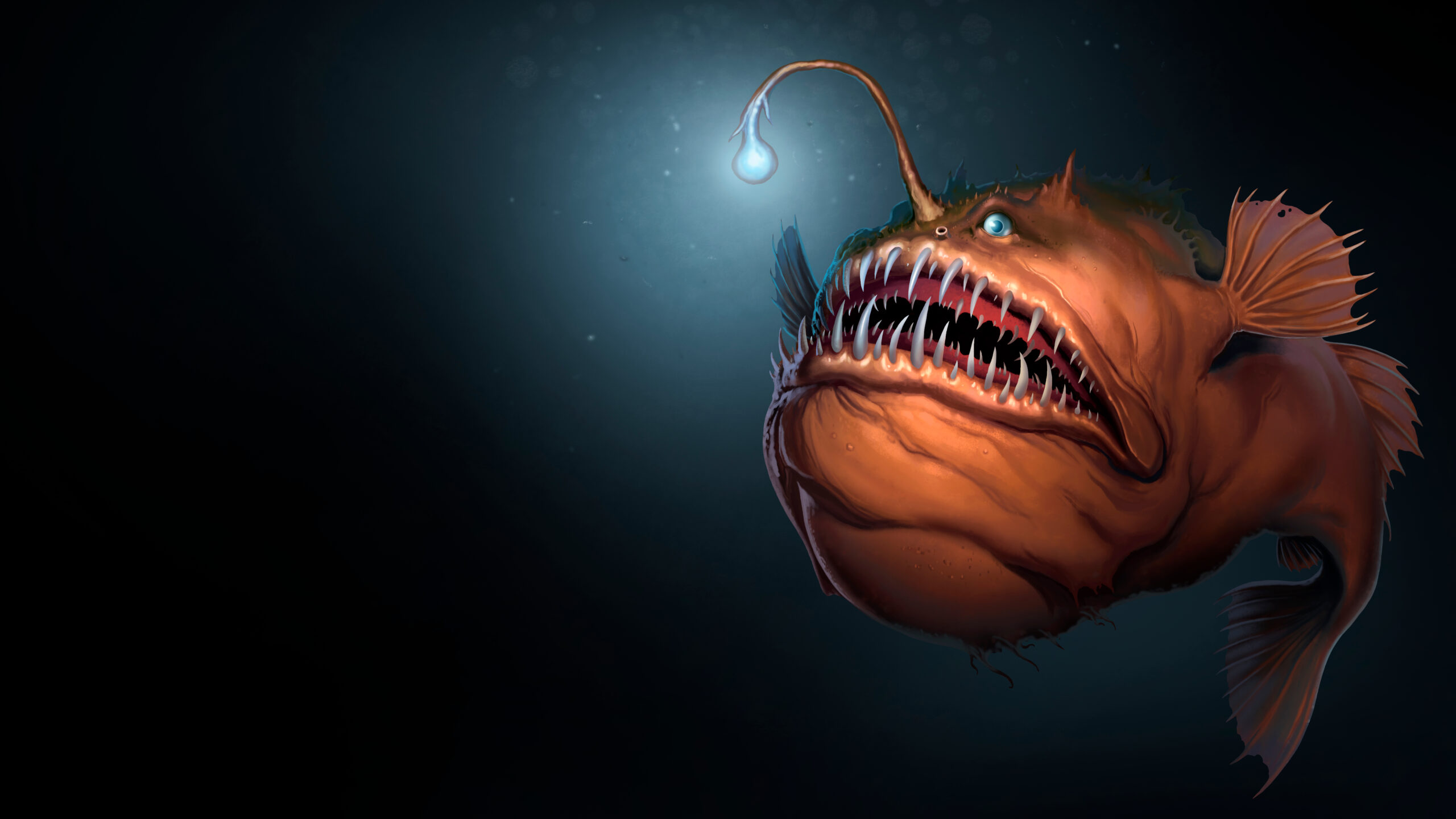
Anglerfish are deep-sea dwellers famous for their bioluminescent lure, which they use to attract prey. The lure is a modified dorsal fin spine that extends over their mouths, adorned with glowing bacteria. By emitting light, the anglerfish can draw in unsuspecting fish or invertebrates, making them easier to capture. This adaptation is critical for survival in the dark, food-scarce environments of the deep ocean. The light produced by the bacteria in the anglerfish’s lure is often blue or green, which travels well through water. Some species have even evolved larger lures or multiple light sources to increase their chances of hunting success. The bioluminescence of anglerfish is one of nature’s most striking examples of evolutionary adaptation to extreme conditions.
Bioluminescent Bay (Mosquito Bay, Vieques, Puerto Rico)
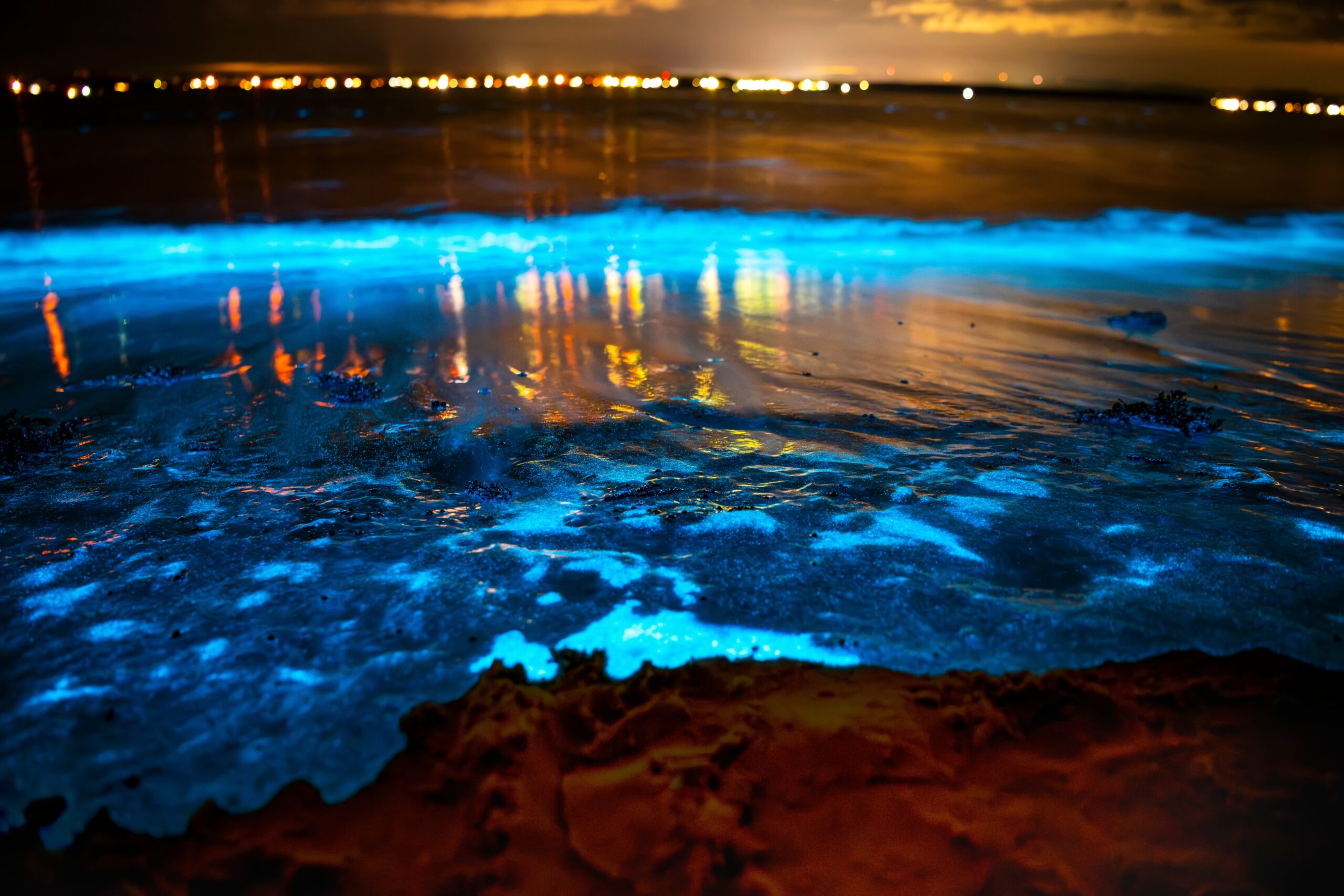
Located on the island of Vieques, Puerto Rico, Mosquito Bay is home to millions of bioluminescent dinoflagellates. These single-celled organisms emit light when disturbed, creating a mesmerizing glow in the water. This phenomenon occurs as a defense mechanism; when the dinoflagellates sense motion, they light up to confuse or deter predators. The light is produced by a chemical reaction involving luciferin, which is catalyzed by the enzyme luciferase. The bay is one of the brightest bioluminescent sites in the world due to the large concentration of these organisms. Local conservation efforts aim to protect the bay from overdevelopment and pollution, which can disrupt the delicate ecosystem. This glowing bay offers an extraordinary glimpse into the beauty and functionality of bioluminescence in nature.
Firefly Squid (Watasenia scintillans)
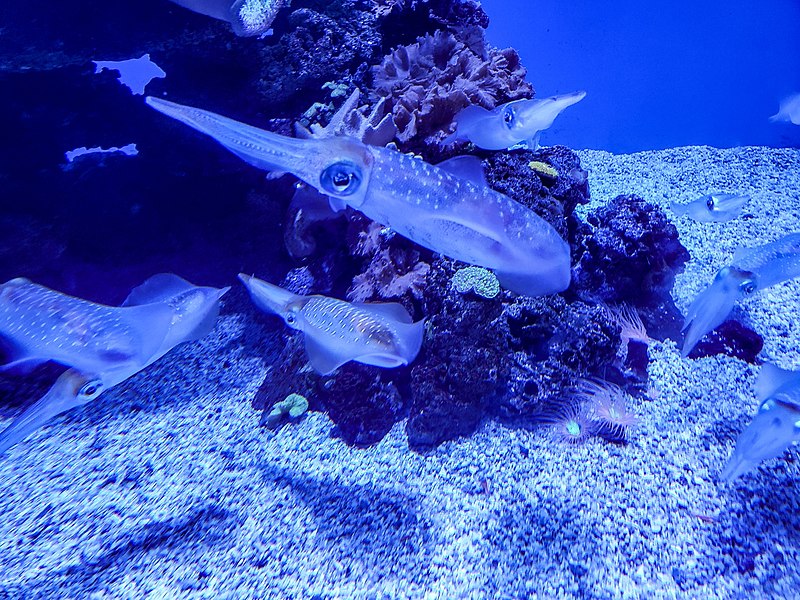
Firefly squids, found in the waters of Japan, are among the smallest bioluminescent species, measuring only a few centimeters long. They use their bioluminescence in a variety of ways: to communicate with each other, to attract mates, and to create a dazzling display for hunting. The squid’s body is covered in photophores, light-producing organs that emit a blue glow when activated. In addition to attracting prey, the light helps the squid blend into the surrounding environment by masking its shadow when viewed from below. This camouflage is especially useful against predators such as larger fish and seabirds. During their mating season, firefly squids gather in large groups, creating a stunning natural light show. Their bioluminescent display also serves as a form of communication within their species.
Glow-worm (Lampyridae species)
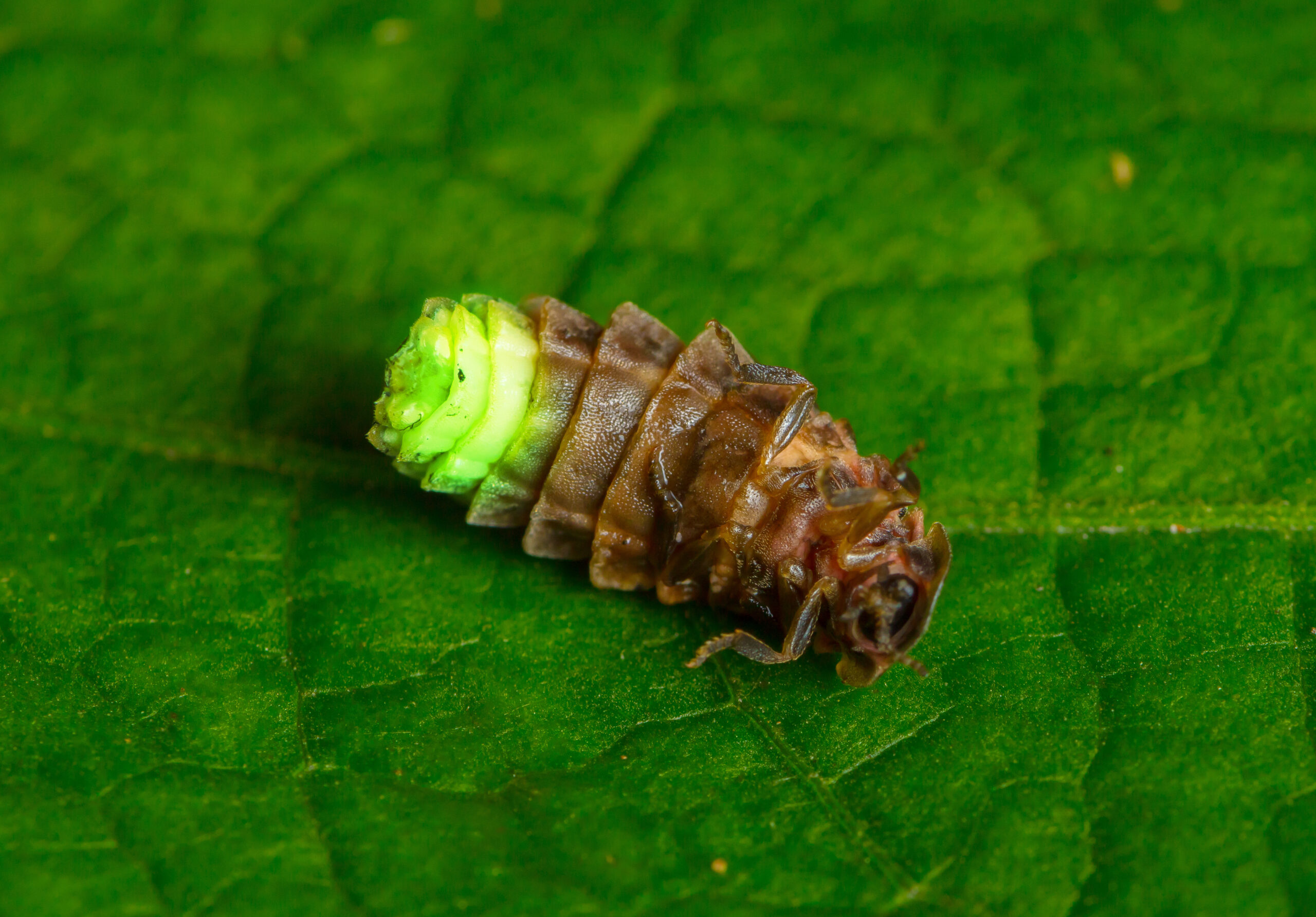
Glow-worms are the larval stage of fireflies, known for their bioluminescence, which they use to attract prey, primarily insects. Unlike fireflies, glow-worms do not flash, but instead emit a steady greenish light from their bodies. The glow attracts flying insects, which are then trapped in sticky silk threads secreted by the glow-worms. The luminescence is produced in specialized light-producing organs located on the lower side of their bodies. This light is a result of a chemical reaction that involves luciferin, oxygen, and an enzyme called luciferase. Glow-worms can remain in their luminous larval stage for months before pupating. They are often found in dark, humid environments like caves, forests, or coastal cliffs.
Lanternfish (Myctophidae family)
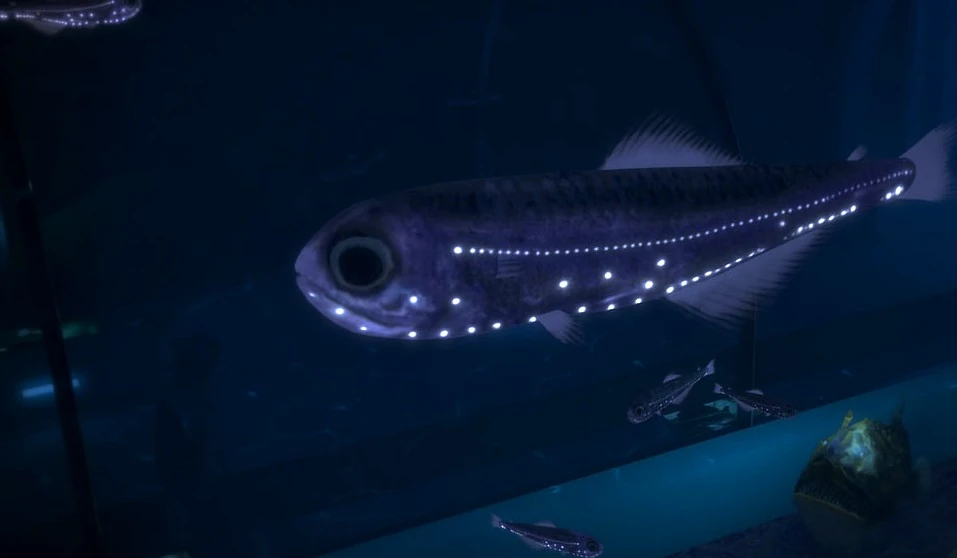
Lanternfish are small deep-sea fish known for their bioluminescent organs, or photophores, that cover their bodies. These organs emit light to help the fish camouflage in the depths of the ocean, blending with the faint light from the surface. Lanternfish use their bioluminescence for predator avoidance, as their glow disrupts their silhouette against the water’s surface. The light is typically blue or green, wavelengths that are effective in penetrating the ocean’s depths. Lanternfish also use their glow to attract mates during spawning, with males emitting specific patterns of light to signal females. In addition to being a defense mechanism, their bioluminescence plays a role in their predation strategy, as they can lure smaller prey towards them. Lanternfish are among the most abundant creatures in the ocean, and their bioluminescence is key to their survival.
Jellyfish (Aequorea victoria)
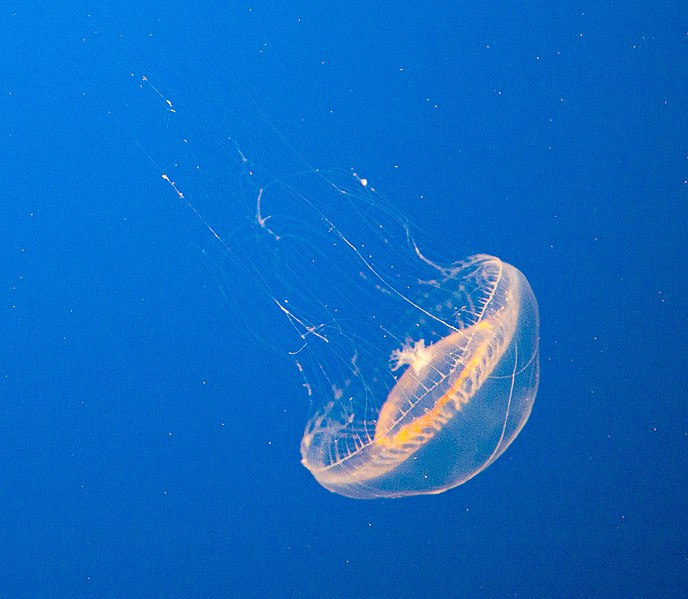
The Aequorea victoria, or crystal jellyfish, is one of the most studied bioluminescent species, known for its glowing green-blue hue. It produces light through a protein called green fluorescent protein (GFP), which is often used in biotechnology. The bioluminescence of jellyfish is typically a response to physical disturbance, such as the touch of a predator. The jellyfish’s glow acts as a warning signal to potential threats, as it is often associated with the release of toxic compounds. In addition to defense, the light can be used to attract prey, such as plankton, which are lured by the bioluminescent display. The phenomenon of bioluminescence in jellyfish has also made them valuable in scientific research. Their light-emitting properties have been harnessed in medical and genetic studies, offering new insights into cellular processes.
Glow-worm (Arachnocampa luminosa)
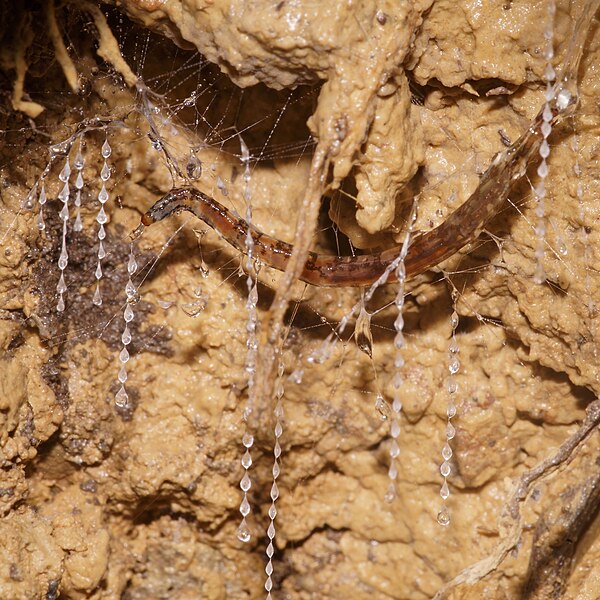
Found in caves and forests of New Zealand and Australia, the glow-worm is known for its bioluminescence, which is used to attract prey. The larvae emit a steady blue-green light from their bodies, which helps to attract flying insects. These insects, often moths, become trapped in the glow-worm’s silk threads, which the glow-worm uses to feed. This behavior makes the glow-worm an ambush predator, relying on its light to lure in unsuspecting prey. The glow itself is a result of a biochemical reaction similar to that of fireflies, involving luciferin and luciferase. The glow-worms spend several months in their larval stage before pupating into adult flies, at which point they no longer glow. They thrive in moist, shaded areas, where the conditions are ideal for their glowing behavior.
Deep-Sea Comb Jelly (Mnemiopsis leidyi)
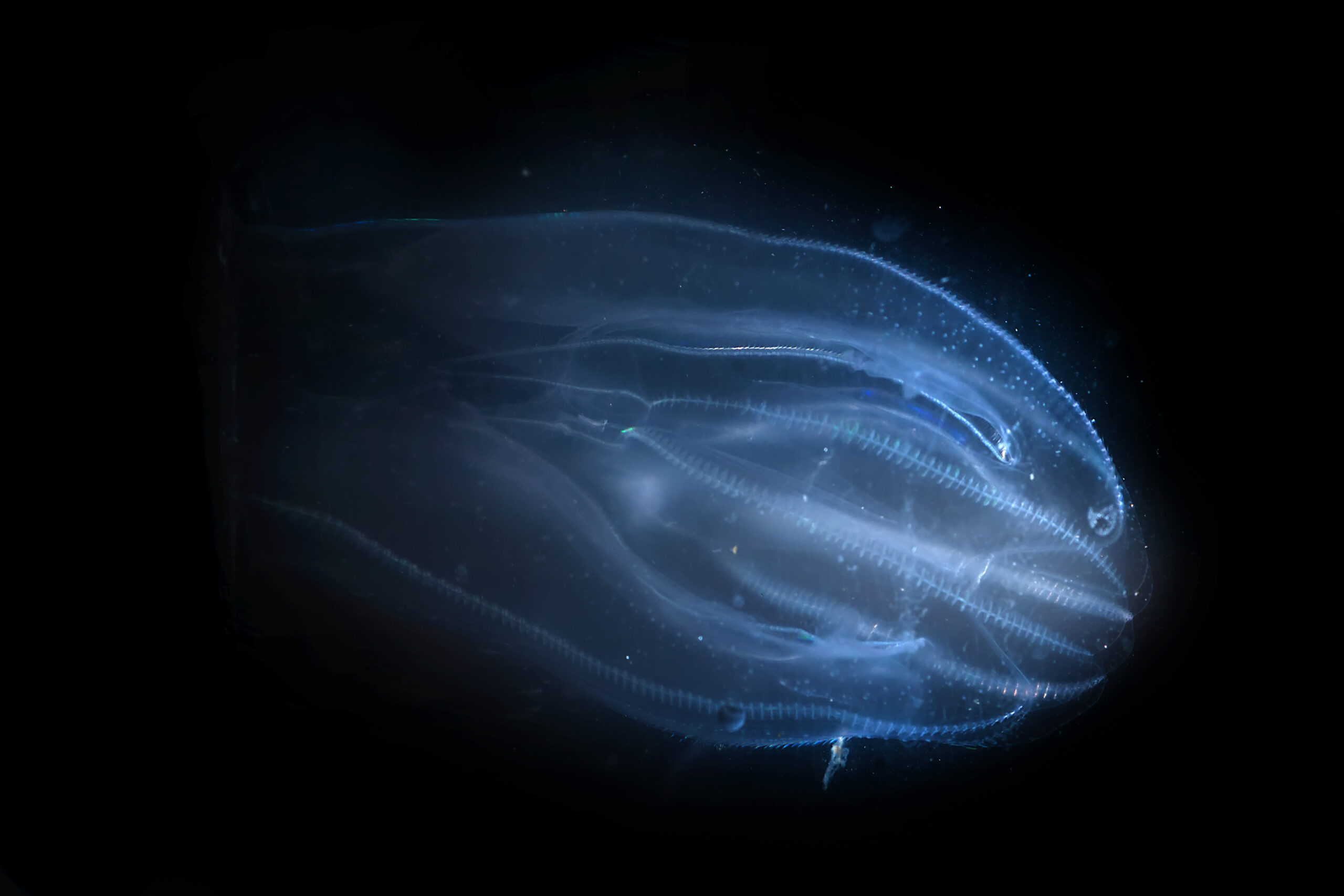
The deep-sea comb jelly, also known as the sea walnut, glows with a mesmerizing, ethereal light due to the reflection and refraction of light within its cilia. This phenomenon is called bioluminescence, but unlike most bioluminescent creatures, its glow isn’t caused by chemical reactions. Instead, it results from the manipulation of light through its microscopic combs, which resemble tiny, hair-like structures. These glowing displays can serve as a form of camouflage or communication, helping the jellyfish either blend into its surroundings or attract prey. The comb jelly is a voracious predator, feeding on plankton and other small marine creatures, and its bioluminescence may help it lure prey closer. Interestingly, in areas where plankton are scarce, its glow might also attract other animals, increasing competition for resources. Though small, these creatures play an essential role in the deep-sea ecosystem, as both predators and prey.
Bioluminescent Fungi (e.g., Mycena species)
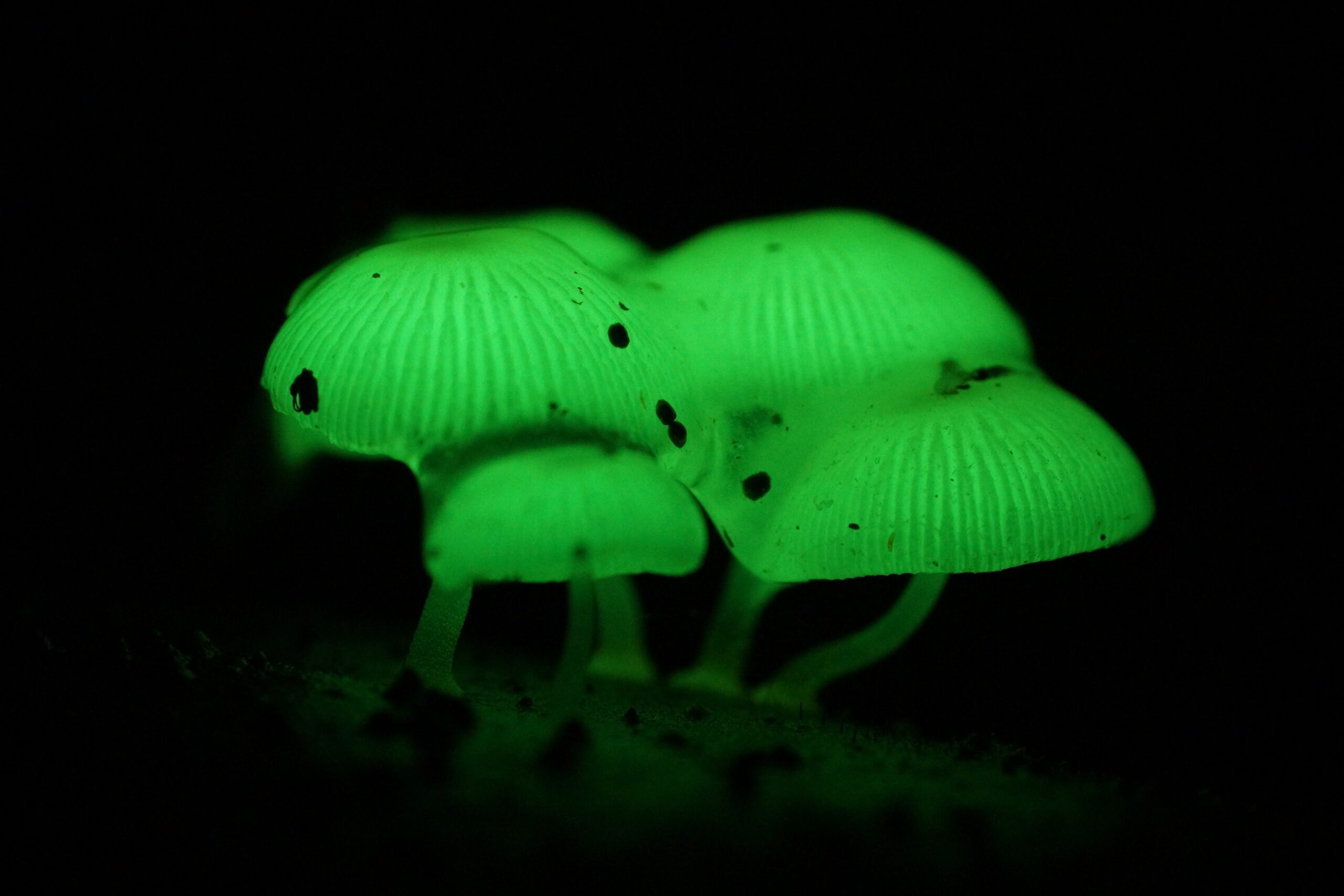
Bioluminescent fungi, such as Mycena species, emit a soft, eerie glow that illuminates the forest floor. This glow is often referred to as “foxfire” or “fairy fire” and is believed to attract insects, which aid in the distribution of spores. Unlike many bioluminescent organisms that use their light for predation or defense, these fungi use their glow to enhance reproductive success. The light emitted by these fungi is a result of chemical reactions involving the enzyme luciferase and the substrate luciferin. While the precise reasons behind their luminescence remain under study, it’s hypothesized that the glow may also deter herbivores from feeding on them. These fungi are typically found in decaying wood and moist environments, thriving in dark, humid conditions where their glow is most visible. Their presence is an indicator of the health of forest ecosystems, where decomposition is essential for nutrient cycling.
GloFish (Genetically modified Zebrafish)
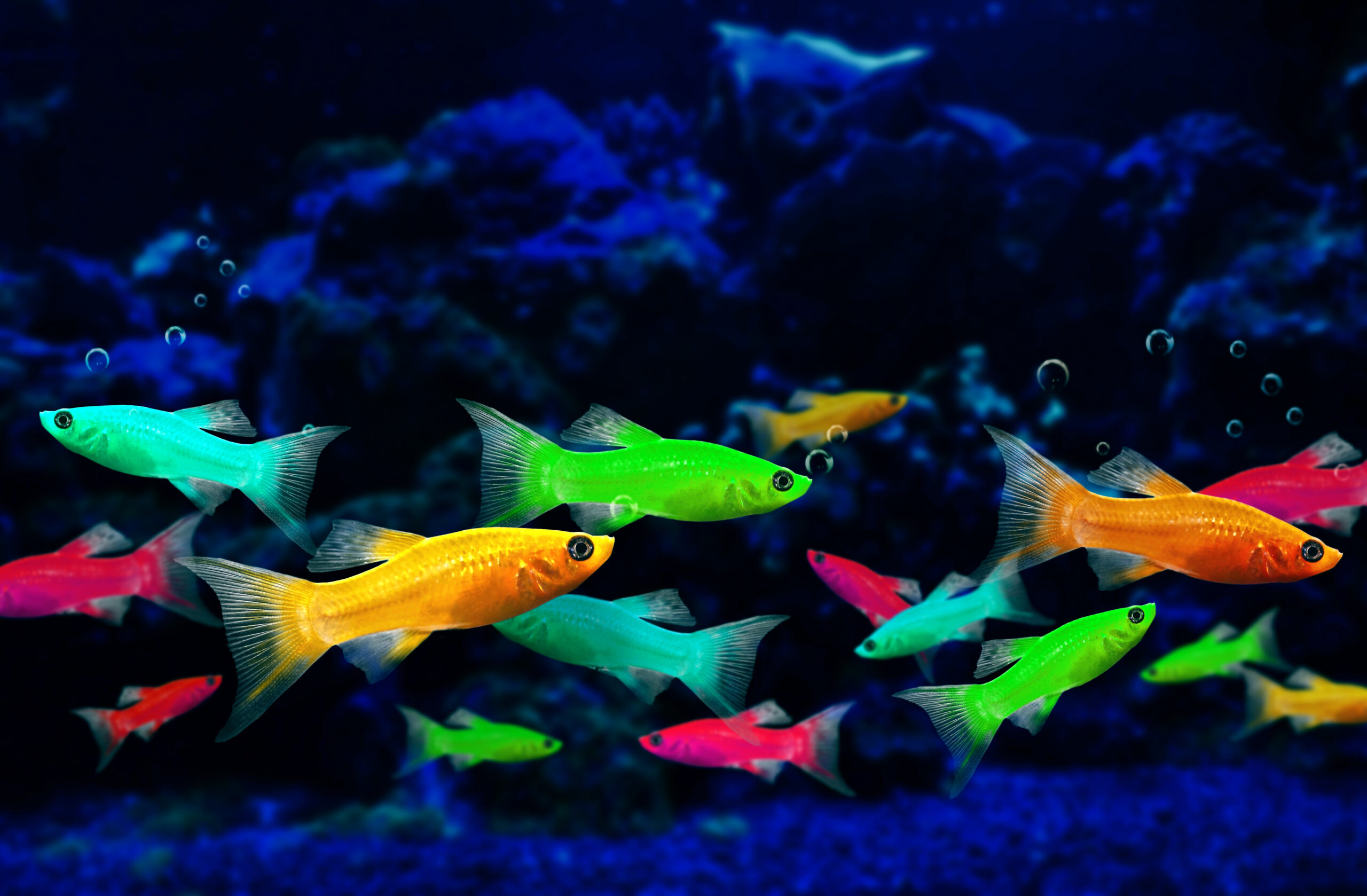
GloFish, the world’s first genetically modified pets, glow in a range of bright colors due to a gene taken from bioluminescent marine organisms. These fish were originally created to detect environmental pollutants, as they fluoresce under certain conditions when exposed to toxins. The fluorescent gene used in GloFish comes from jellyfish and sea anemones, which produce green and red light, respectively. While the bioluminescence in these fish is not the same as natural bioluminescence in many deep-sea creatures, it has sparked interest in both biotechnology and aquaculture. The fish’s ability to glow provides a visual indicator of their health and environmental conditions, offering a unique tool for both scientific and decorative purposes. These fish are widely kept as ornamental pets in home aquariums and have contributed to the biotechnology industry’s understanding of gene expression. Though not naturally occurring, GloFish demonstrate the potential of genetic engineering in creating bioluminescent organisms.
Glowing Plankton (Noctiluca scintillans)
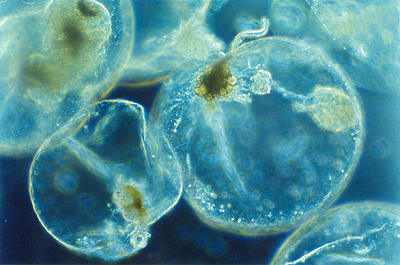
Noctiluca scintillans, a type of marine plankton, is famous for its brilliant blue bioluminescence, which lights up coastal waters in a stunning display. This plankton’s glow is produced through a chemical reaction when the organism is disturbed, such as by movement from fish or waves. The bioluminescence is thought to serve as a defense mechanism, as the glow may startle predators or attract larger predators to target smaller organisms. These plankton are often seen in large blooms, creating glowing waves along coastlines. The light they produce is an example of “dynamism,” in which the intensity of bioluminescence fluctuates in response to external stimuli. Noctiluca scintillans feeds on other plankton and is an essential part of marine food webs. In some cultures, these glowing phenomena have inspired myths and legends, often symbolizing magical or otherworldly forces.
Vampire Squid (Vampyroteuthis infernalis)
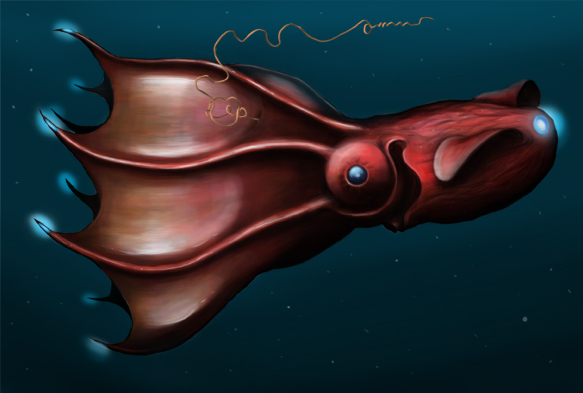
The vampire squid, which inhabits the oxygen-poor depths of the ocean, exhibits bioluminescence as a form of self-defense. It is covered with bioluminescent organs that can produce flashes of light when the creature feels threatened. The squid’s bioluminescence is unique because it doesn’t use this light to attract prey; rather, it helps create confusion and camouflage. When threatened, the vampire squid can eject a glowing cloud of mucus to further disorient predators. The glow of this mucus can also attract larger predators, providing an opportunity for the squid to escape. These squid are small but incredibly adapted to their low-oxygen, dark environment. Their bioluminescence is essential for both survival and communication in their pitch-black habitat.
This article originally appeared on Rarest.org.
More From Rarest.Org
The longest songs ever written often push the boundaries of musical creativity, blending different genres and moods to create something truly unique. These epic tracks don’t just stretch the usual song length, they redefine what a song can be. Read more.



